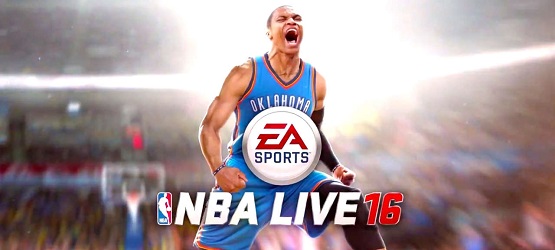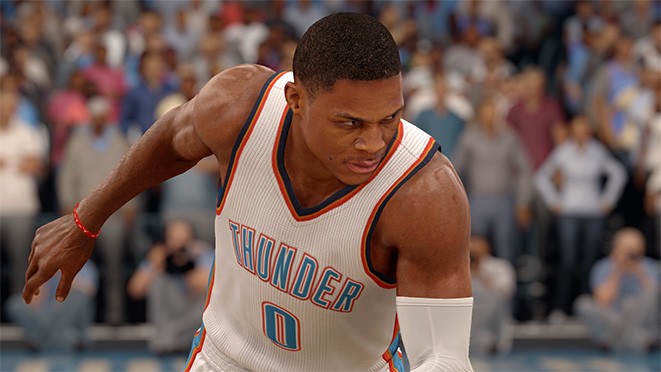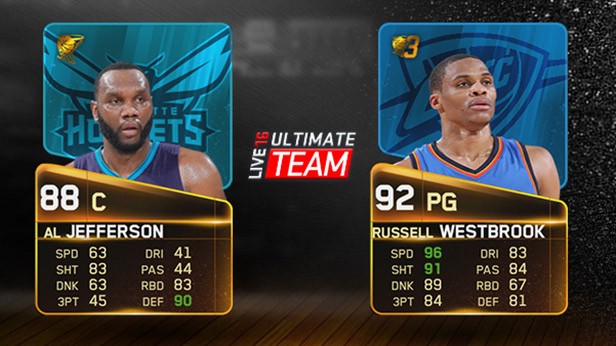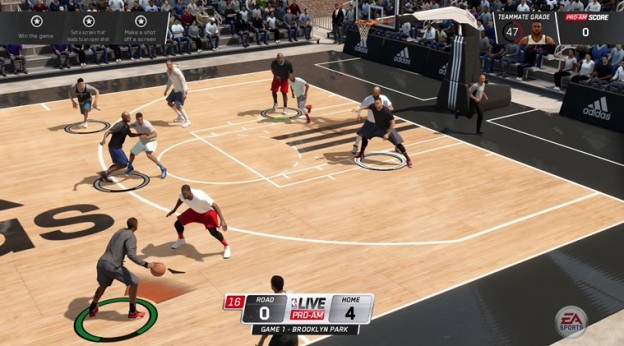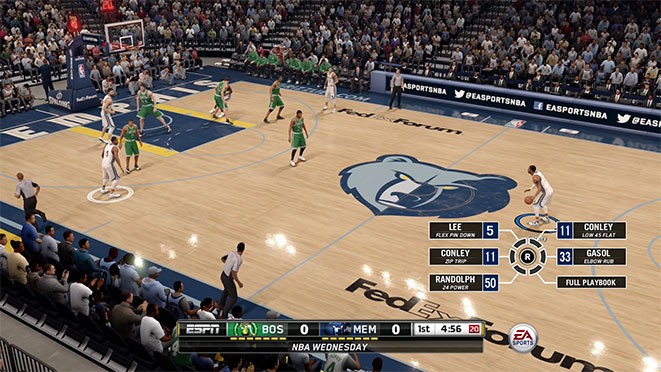Few people outside the sports game-verse are aware that the NBA Live series is now, relatively speaking, an underdog. After all, it’s a product of Electronic Arts — the third-largest gaming company by revenue — and enjoyed a nice stint in the limelight for 15 years. Ever since EA Sports decided to drop the Live name to work on the ill-fated NBA Elite 11, however, the brand has taken considerable damage. In fact, Live outright disappeared for four years, leaving NBA 2K with no competition — an especially grievous issue when you consider how much critical acclaim the latter games garnered during that gap. Then NBA Live 14 came, heralding the return of this treasured basketball mainstay, and…it was pretty bad.
Needless to say, last year’s iteration of the franchise had its work cut out for it, and it served its purpose as a (partial) return to form. Since 2K doesn’t have a gaping hole in the middle of its series, though, it’s been given a significant continuity advantage for the past two entries — leaving fans with only one question: has NBA Live 16 made enough improvements to be this year’s definitive basketball game? The short answer: Not really. This year’s version of Live is marginally better than last year’s, but there’s still plenty of catch-up to do before it can compete with the likes of NBA 2K16. The long answer? Read on.
Flimsy Fundamentals
Let’s get the biggest problem right out of the way. NBA Live 16 can’t compete with the likes of 2K16 because its core controls and mechanics aren’t polished enough. This isn’t about game modes, graphics or online play: this is a fundamental issue with the way players move and respond on the court. To be fair, it’s far from the worst you’ll ever play, but nailing these elements is an essential part of the experience — if dribbling, shooting and passing don’t feel right in one mode, they don’t feel right in any of the modes.
When it comes to control, the prevailing feeling is that whoever you’re controlling is just too damn sluggish. Your player never responds with the fluidity and freedom of motion you expect, and there are quite a few moves that feel inconveniently mapped (why, for example, do I have to rotate the right stick to spin my body around a defender?) or just sort of unresponsive (you’re supposed to be able to hold L2 to set up an offensive screen, but I did this to no avail in many cases). These problems are compounded when on defense; it’s oftentimes much too difficult to stay with your man, let alone get between him and the basket.
Clunky controls are serious enough on their own, but the questionable AI can compound them into a bit of a nightmare if you’re not lucky. For example, it’s unfortunate that it’s difficult to remain man-to-man, but it’s even more unfortunate that AI opponents seem to exploit this weakness. These guys drive to the hoop almost every time, and you often feel rather helpless to stop them. Then there’s the matter of your faithful teammates, who seem to exist only to play hot potato with the ball until it reaches your hands. Their generosity is appreciated, but it’s also unrealistic and tiresome that the burden of scoring constantly falls on you: when my player-created character was enjoying his first-ever NBA game in Rising Star mode, for example, it struck me as odd that he’d been responsible for 80 percent of the Boston Celtics’ points.
So there’s no denying that there are definitely some serious issues with the core gameplay — but credit has to be given where it’s due, and there are a few significant improvements that should be noted. As a prime example, the new shot meter is mercifully simple, letting you time your release with ease and comfort. There’s also some helpful information that appears once you let go: a percentage, which lets you know the probability of success based on how you selected your shot, and a small indication of any mistakes you made (e.g. “late/early release”). Both of these make shooting a good deal easier than it’s been in the past.
The Many Modes of Live 16
It’s a shame the core gameplay of Live doesn’t meet expectations, because there are a couple of modes where it really could have been put to good use. Pro Am Live Run is easily the standout among these inclusions, allowing ten players to jump into a five-on-five game to 21 points. This one is short, sweet and a joy to pick up and play, and though CPU-controlled characters are an option, the ability to play against real people does ease a considerable amount of the pain (and in the process, makes things a whole lot more fun).
Ultimate Team, limited perhaps by the niche appeal of its “collectible card” style of play, is nevertheless a compelling concept. It’s a fun take on the fantasy sports world that sends so many into a tizzy, and there’s definitely a certain subset of players that will get a kick out of unlocking packs and putting together teams of their favorite superstars. Admittedly, the strategic element involved — which sees players leaving your team after a set amount of time — might be divisive for those who get attached to a specific lineup, but it also means you’re constantly changing tactics and thinking on your feet.
Rising Star is okay at best. It’s sure to come off a bit tame by comparison to Spike Lee’s NBA 2K16 campaign contribution, but that’s not the only thing holding it back. Like a lot of underwhelming modes of this ilk, the game doesn’t defer gratification long enough for there to be any sort of satisfying payoff. Whether it’s the previously-cited example of AI expecting you to score all the time, or your hilariously short journey from university to being drafted by your favorite team, you’re thrust into success too fast and too easily to appreciate your achievements. Add to that a pretty lackluster set of customization options, and you’re essentially left with a long series of games that don’t feel all that different from each other.
A Sound Presentation
Live 16 was developed by a company with a pretty penny to spend on graphics: in short, it looks pretty damn nice. Human movement both on and off the court looks smoother than it ever has, and it’s quite a thrill to see famous courts so painstakingly replicated (this humble writer was quite moved by Live’s version of his Celtics’ TD Garden). In a way, it’s sort of funny that the players’ animations are so fluid, because that flexibility is so rarely duplicated when controlling them. Still, nobody’s going to complain about the sights on display here.
That enthusiasm should be matched for the soundtrack, which is a great blend of hip hop and electronic music. If you’re not enthused by either of those genres, you might want to supply your own tunes, but the 22 tracks hand-picked by disc jockey MICK are pretty choice; Vince Staples’ “Loca” is one of the biggest standouts.
Getting Better…Some of the Time
NBA Live 16 has a few new modes and features that help elevate it above last year’s offering, but that’s practically a footnote when you consider how the game flubs some of its basic controls and AI. Things simply aren’t as tight as they need to be to provide an experience that meets the competition head-on, and that’s too bad given some of the options — if the fundamentals were in place, Pro Am Live Run and Ultimate Team would be easy recommendations. As it stands, there’s enough to enjoy for die-hard fans of EA’s long-running hoops franchise, but limiting yourself to this game means settling for second best.
Review code for NBA Live 16 provided by publisher. Reviewed on PlayStation 4. For more information on scoring, please read our Review Policy here.
-
Pro Am Live Run is perfect pick-up-and-play action
-
Ultimate Team is addictive and fun (for a specific audience)
-
Some mechanics feel more solid, especially the new shot meter & feedback
-
Core controls are still not tight enough
-
AI is severely lacking on both sides of the court
-
Rising Star mode gives you too much too soon
NBA Live 16 Trophy List
-
NBA Live 16 Trophy List
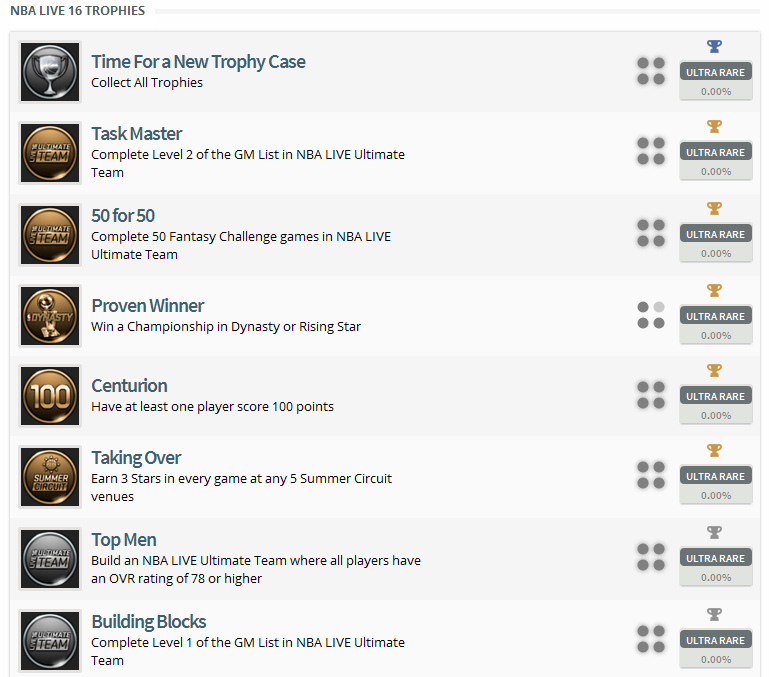
-
NBA Live 16 Trophy List
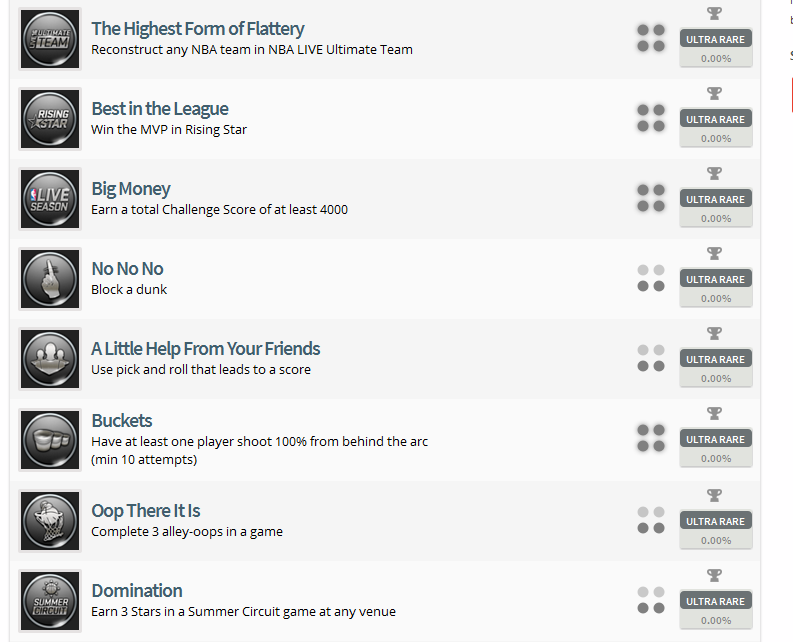
-
NBA Live 16 Trophy List
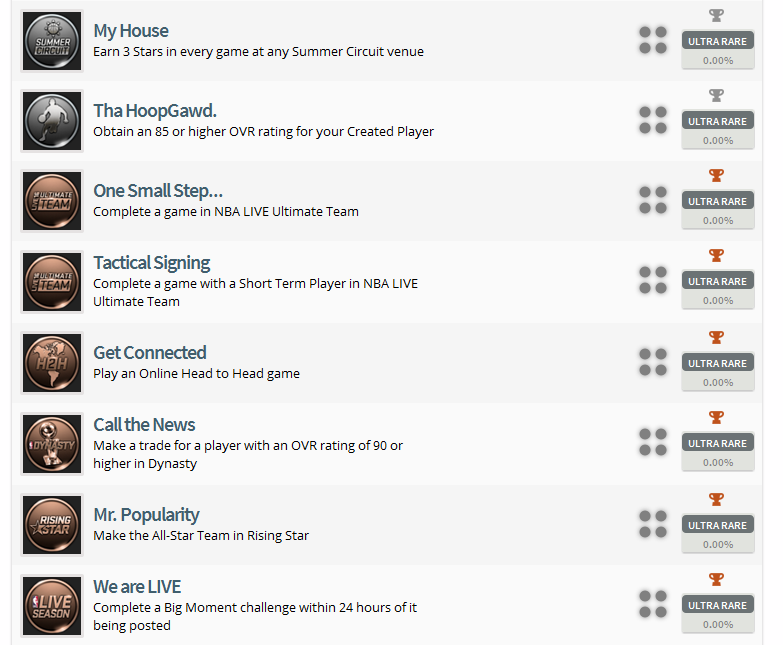
-
NBA Live 16 Trophy List
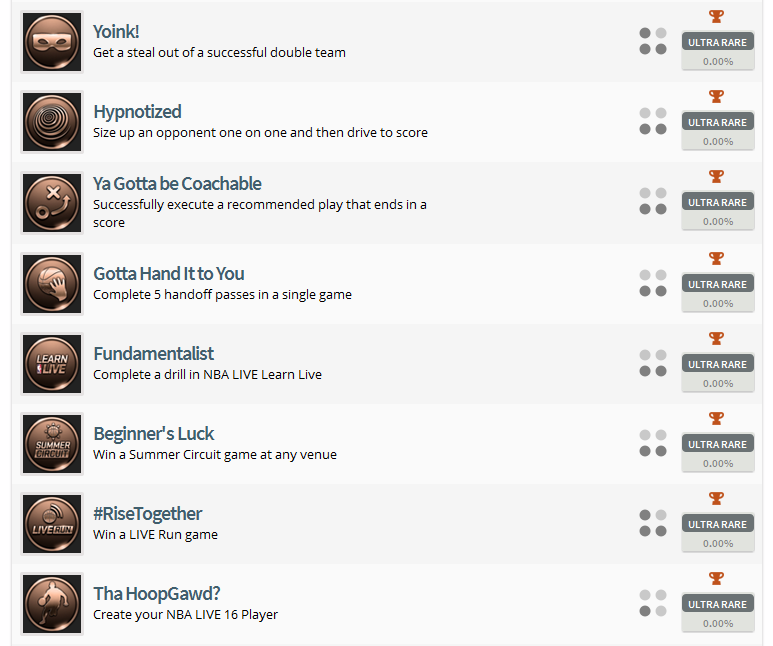
-
NBA Live 16 Trophy List

